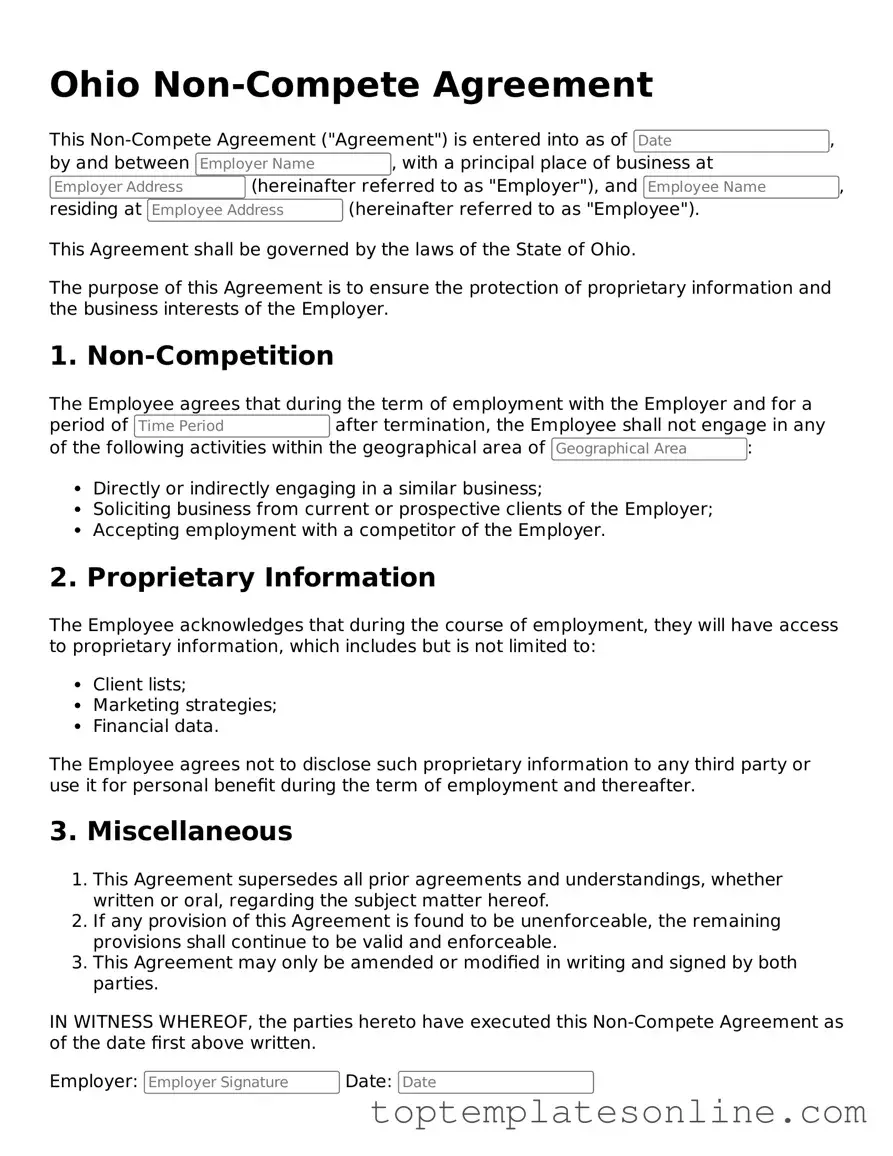Blank Non-compete Agreement Template for Ohio State
A Non-compete Agreement in Ohio is a legal document that restricts an employee from engaging in similar work or business activities that compete with their employer after leaving the company. This agreement is designed to protect the employer's business interests and trade secrets. Understanding the nuances of this form is essential for both employers and employees to ensure compliance and avoid potential legal disputes.
Customize Non-compete Agreement Here
